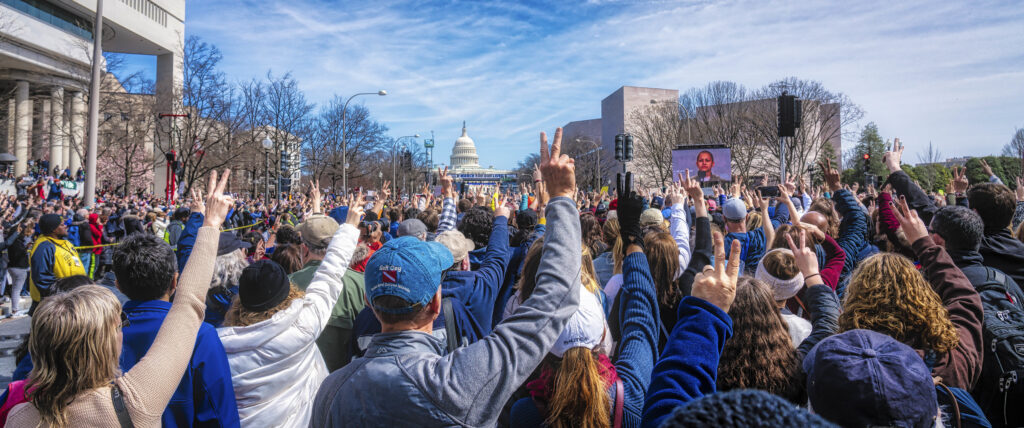Media coverage of mass shootings has become relevant over the past decades due to the increase of these shootings throughout the United States. Media outlets reach many people as individuals are constantly consuming some form of news. According to Dahmen (2018), there are five levels that influence and affect media production. First is the interaction between institutions and media organizations. Second, are elements at the human level. The third and fourth are organizational traits, as well as the overall social system. Finally, the fifth level is professional routines and practices. This is important to understand how the media relays information about mass shootings in a specific manner. There is also the aspect of the journalist. It is important to realize that journalists are typically the first individuals on the scene and have their own perceptions. Additionally, although variables at all five levels can influence views, the hierarchical model adds that journalists’ perceptions about how they cover mass shootings are predominantly rooted at the individual level (Dahmen, 2018). Even if a journalist wants to write an article on a mass shooting from their point of view and include their own opinions, they may not be able to do so. The news or media outlet will determine the final release of that specific article. To add to how media relays information to the public, in American media coverage, social issues were the second-least talked about topic according to Barbieri and Connell (2015). Social factors do play a large role in mass shootings and are not discussed at the level they should be.
There are aspects of mass shootings that media outlets choose not to include which can be deceiving to their consumers (Barbieri and Connell, 2015; Beard et al., 2018; Leavy and Maloney, 2009). Silva et al. (2021) contribute to this argument regarding gender and mention that news outlets usually do not mention that women are frequently the major targets and perpetrators of this kind of violence in their publications. As Leavy and Maloney (2009) state,
“Although the Virginia Tech killer had a history of stalking and harassing women, these incidents were never raised by the media; and failed to produce any meaningful public discourse about masculinity and its possible connections to violence.”
Unfortunately, there are many mass shootings that do not receive large forms of media publishing or even any at all. Leonard (2017) adds that the distinct and uneven media coverage also reflects the legitimacy and illegitimacy of certain bodies, groups, and experiences. The location can be a large influence on the media coverage of a mass shooting. Beard et al. (2019) aimed to describe the incidence of “neighborhood” mass shootings in one US city and to determine how these events were communicated to the public through news media.

Although there has been an increase in media concerning mass shootings, this was not the case during the research Beard et al. (2019) conducted in which specifically focused on neighborhood mass shootings that occurred several times per year but receive limited media coverage. Instead of focusing on daily urban gun crime, the news media frequently focuses on high-profile mass shooting occurrences (Beard et al. 2019). As seen in Beard et al. (2019), the authors go on to explain that there is not much information in relation to the reporting range, media content, or consistency of coverage among neighborhood mass shootings. This research study is beneficial to understand why certain mass shootings do not receive proper media coverage throughout the United States.
When thinking of mass shootings, typically the first type of shooting to come to mind is school shootings as these are typically broadcast through media. Although Barbieri and Connell (2015) state that school shootings are rare, they receive disproportionate media attention, most likely because of the recent incidents’ multiple victims counts. The fact that these incidents frequently go unexplained spreads fear, garners more media attention and prompts inquiries from parents and members of the community who want reassurance that their children will be safe by the school and police authorities (Barbieri and Connell 2015). School shootings occur more often now and there has been an increase in focus from media outlets on these occurrences. Beard et al. (2019) mention that there is little consistency in reporting range, the consistency as well as characteristics mentioned by media outlets regarding shootings. Barbieri and Connell (2015) in their study on Columbine, point out that it was not seen as an extreme example of school shootings but as proof of school violence. They both added that this was because of the media’s attention, which in turn, persuaded the public to believe that school violence and school shootings are related.
Alongside written articles, scholars have also studied photographs that are presented in mass shooting articles. The types of images vary but Dahmen et al. (2018) inform that media images give the perpetrators of mass shootings significant attention, which could have a spillover effect. Dahmen et al. (2018) point out that at Virginia Tech and Sandy Hook shootings, “Dominated newspaper front pages in lead story positions, with 95% of front pages after Virginia Tech and 90% of front pages after Sandy Hook including photos of the massacres” (Dahmen et al. 2018). Ultimately, all aspects of media reporting, characteristics, and execution have an important impact on consumers and how mass shootings are relayed to the public eye.